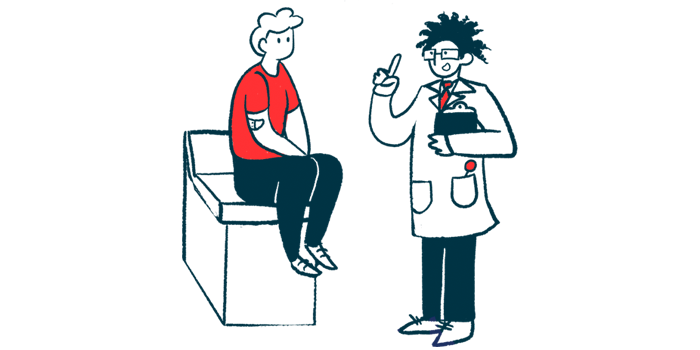More Information Needed on Impact of SCD, Treatments on Male Fertility

While most adolescent boys and young men with sickle cell disease (SCD) report wanting biological children in the future, few are aware of the impact their disease and its treatments can have on their fertility, a small, pilot U.S. study suggests.
Similar knowledge gaps were found for these patients’ caregivers.
While larger studies are needed to confirm these early findings, they highlight fertility-related knowledge gaps among young male patients and their caregivers, and support developing educational resources that focus on impacts of SCD and treatments on male fertility, as well as fertility testing.
“As clinicians, we need to do a better job of integrating discussions regarding SCD-associated fertility concerns with our patients, starting at an early age, and with their caregivers,” Leena Nahata, MD, the study’s first author, said in a press release.
“Preemptively understanding these risks allows them to make educated decisions about their care and futures,” said Nahata, a pediatric endocrinologist and principal investigator at Nationwide Children’s Hospital (NCH)’s Abigail Wexner Research Institute, Ohio.
“It’s also crucial that we develop culturally-tailored educational materials and assess fertility testing barriers, as we know this population already faces barriers to equitable health care,” Nahata said.
The study, “Fertility Testing Knowledge and Attitudes in Male Adolescents and Young Adults with SCD and Their Caregivers: A Pilot Study,” was published as a letter in Blood Advances.
Advances in diagnosing and treating SCD have allowed patients to reach reproductive age and live longer lives. However, both the disease and its associated treatments, particularly hydroxyurea, have been shown to affect male fertility.
Previous studies showed abnormal semen parameters in adolescents and young adults (AYAs) with SCD, irrespective of hydroxyurea treatment, and reduced sperm precursor counts in pre-pubertal boys on hydroxyurea.
While experts recommend fertility testing (semen analysis) in male AYAs with SCD to assess each patient’s reproductive risks and options, “specific guidelines have not been developed,” the researchers wrote.
These patients also “frequently have poor access to healthcare, which may limit their opportunities to learn about and obtain testing, compromise their understanding and use of fertility information, and prevent them from getting testing that is not covered under insurance laws in many states,” the researchers added.
Nahata, along with Susan Creary, MD, a pediatric hematologist at NCH, and colleagues, conducted a pilot, single-center study to address the limited knowledge and lack of information about fertility and fertility testing among adolescent boys and young men with SCD and their caregivers.
A total of 20 male AYAs and 15 of their caregivers were enrolled at NCH’s Comprehensive Sickle Cell Clinic. Patients’ median age was 16.5 years (range, 14–21 years), and most (85%) were Black/African American.
All participants completed the Fertility Knowledge and Attitudes Questionnaire, a survey developed by the research team that covered sociodemographic factors, parenthood goals, fertility-related knowledge, and factors influencing interest in fertility testing. They were compensated with a $10 gift card.
Results showed that while 85% of patients reported wanting a biological child in the future, only about one-quarter of patients and caregivers were aware that SCD and its treatments could make it difficult to achieve that.
Only 21% of patients and 47% of caregivers considered they had enough information on the subject, and 72% of patients and 60% of caregivers reported being interested in receiving more information on the impacts of SCD and its treatments on male fertility.
Also, many male AYAs and caregivers were uncertain about how to obtain a semen sample (35%; 47%) and about its purpose (20%; 30%).
Results were not significantly influenced by caregivers’ income or education, but older age in patients was significantly linked to a greater knowledge on the disease’s negative impact on fertility.
Moreover, only about one-third of patients (37%) and their caregivers (33%) reported being interested in undergoing fertility testing. Most caregivers (40%) showed no interest, while the majority of AYAs (52%) were unsure — “potentially due to the lack of fertility knowledge and/or future oriented thinking during adolescence,” the researchers wrote.
The most commonly reported factors that would increase both patients and caregivers’ interest in testing included certainty about what would happen to the semen sample after, the ability to afford the test, and the ability to do something about an abnormal test result.
Regarding sample procedures, the most preferred option among patients (45%) was “in a private place in the hospital and to have our family transport it to the testing center,” rather than collecting the sample “at home” or “at the testing center” and “having someone else transport it to the testing center.”
“As most AYAs and caregivers reported a desire for biological parenthood, and prior research shows that adult men with SCD opt to bank sperm before initiating hydroxyurea, the unfamiliarity with fertility testing processes and other fertility-related knowledge gaps among AYAs and their caregivers are concerning,” the researchers wrote.
These preliminary findings highlight that “tailored fertility-focused education programs and inclusion of fertility-related topics into multidisciplinary SCD care are needed starting in early adolescence,” they added.
The resources should be focused on how SCD and its treatments may affect male fertility, as well as how to obtain fertility tests, their purpose, cost, interpretation, and process, and what happens to the sample after collection.
More research is needed on “fertility-related outcomes” among adolescents and young adults and their parents, Nahata said, adding that researchers needed to first know what to say to them in order to educate them.
Nahata and her colleagues hope to help advance fertility research in SCD patients and develop culturally sensitive and inclusive education materials that promote fertility discussions early on between AYAs and their caregivers.
“Addressing fertility knowledge gaps and barriers, conducting definitive fertility studies in younger patients, and expanding provider training in fertility are needed to achieve equitable fertility healthcare for AYAs with SCD,” the researchers concluded.







